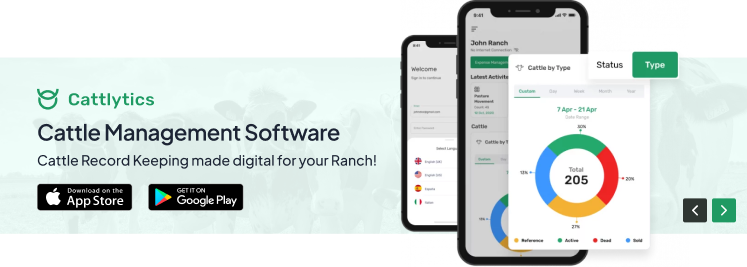Quality control in seafood processing simply cannot be dispensed with because it is the only way to meet customers’ standards and be cost-efficient at the same time for producers and sellers. It involves the overall functions that focus on monitoring and guaranteeing the quality of fish and fish products.
The buyers choose to fish at ports’ markets, and the formal quality control systems established based on written standards dominate product quality assurance in the fisheries sector. Informal quality Supervision is very pervasive, but more structured processes in formal QC are developed to minimize errors and attain agreed-upon standards.
An efficient quality control process in seafood processing aims to maximize competitiveness by eliminating customer complaints and minimizing revenue losses from quality problems. This guide delves into the features and principles of quality control to support the preservation and improvement of seafood product quality.
Understanding Fish Quality Control
Fish quality management is an inevitable process in seafood transformation. This process guarantees that fish products meet by-market requirements of freshness, texture, odor, and appearance. This fact sheet aims to provide an overview of the factors that determine fish quality, fish quality assessment methods, and compliance standards and certifications that our industry follows.
Definition and Objectives of Fish Quality Control
Fish quality control is fundamental in seafood processing to ensure that fish products meet unique freshness, taste, texture, and safety standards. Effective quality control measures help please customers, reduce waste, and conform to standards.
Fish quality control is a complex and systematic monitoring and management system that ensures fish products are in accordance with the determined standard of quality, safety, and freshness. The key goals defined for fish quality control include the preservation of product integrity, improvement of customer satisfaction, and elimination of hazards or spoilage.
Key Parameters for Assessing Fish Quality
The most important ones are considered the fish quality parameters:
Freshness
Some of the details, such as appearance, smell, and feeling, tell us about the freshness of fish. A fish fillet should have clear, bright eyes, firm flesh, and be lightly scented with the oceanic air.
Texture
Texture is undoubtedly a crucial quality attribute because it directly impacts the fish’s softness, elasticity, and juiciness. The texture of fresh or dried fish should feel firm and solid.
Odor
A fresh fish is supposed to carry the clean, fresh-water smell reminiscent of seawater. Foul scents like ammonia or fishiness may, in that case, imply that the food is rotten.
Appearance
The fish’s appearance includes color, sleekness, shine, and cleanliness. Fresh fish should have vivid colors and shiny scales, not discrepancies like discolorations or bruising.
Methods for Fish Quality Assessment
Sensory Evaluation
Sensory analysis involves assessing fish collection through human senses such as looking, smelling, tasting, and feeling. Consecrated by judges or sensory experts, fish products are assessed according to predetermined characteristics.
Chemical Analysis
Chemical research is one method used. It entails testing fish samples for various chemical parameters, such as pH, TVN, TMA, and histamine. These measurements offer numerical information about fish freshness and spoilage.
Microbiological Analysis
Microbiological evaluation comprises testing fish samples for the possible existence of bacteria, viruses, and other microorganisms that might indicate contamination or defilement. The basic ones are total plate count, coliform count, and the presence of a particular pathogen.
Regulatory Standards and Certifications
Regulating standards and certifications helps to provide quality assurance and safety for fish intake. The major international bodies like the Food and Agriculture Organization (FAO) and the World Health Organization (WHO) create standards and rules that the fish processors should follow to improve the safety of the final commercial.
Furthermore, certifications like Hazard Analysis and Critical Control Points (HACCP) and GlobalGAP are the standards for health and safety that all seafood suppliers, especially those utilizing Seafood ERP systems, must adhere to during the process.
Quality Control in Seafood Processing Facilities
Seafood procession facilities should be concerned about quality control, which is thus critical for the production of safe, good quality, and compliant seafood items through the production process. They monitor and enhance the level of these operations in order to provide quality services and adhere to the agreed standards.
Overview of Seafood Processing Facilities
The seafood processing industries include facilities that are equipped with specific and gainful tools and equipment for the tasks of handling, processing, and packing varieties of seafood products that include fish, shellfish, and crustaceans. This usually involves creating an environment that consists of receiving areas of incoming raw materials, processing, packaging, and storage in a way that ensures the sanctity and overall safety of the product throughout the production process.
Common Quality Control Practices in Seafood Processing
While the processes employed in seafood processing may differ from one to another, common quality control practices are evident in the following ways:
HACCP (Hazard Analysis and Critical Control Points)
HACCP entails a systemic process of finding and regulating food safety hazards. When HACCP plans are designed for fish processing, we define critical control points (CCPs), which are the possible places hazards are generated to prevent, remove, or lower them to the acceptable level.
GMP (Good Manufacturing Practices)
GMP, in its definition, refers to the appropriate working environment and conditions, such as legal requirements and quality standards, that are desirable for producing high-quality and safe foods. In the case of seafood processing, GMP involves sanitary measures of all kinds, such as sanitation, hygienic conditions, and equipment cleanliness, as well as staff training.
SOPs (Standard Operating Procedures)
SOPs are documentation of a set of directions that will take a person through the process of implementing a system or task in seafood processing facilities. The policies include a variety of quality control measures like standardization, efficient handling, and checks for adhering to the set standards in the entire process of production.
Integration of Technology in Seafood Processing for Quality Control
Salmon Processing Software
Specialized software solutions developed for salmon processing factories help establish seamless running conditions, visibility of the supply chain, and compliance with regulatory standards. These software systems may involve modules for inventory management, quality, sampling, production schedule, and traceability.
Fish Processing Software
Fish processing software is a tool that started from scratch and is a sequence of current fish processing operations. It is aimed at process enhancement, product quality, and waste reduction in fish processing plants. These software solutions can contain their own complimentary modules for the tasks of yield management, grading, sorting, and packaging, all of which are directed towards achieving the greatest level of efficiency both in time and quality.
Seafood Processing Inventory Tracking
Tracking systems can monitor inventory levels and track products as they pass through the processing plant. Such seafood processors can work excellently to trace the movement of inventory levels. With this process, the possibility of stockout reduction is high, product losses are reduced, and timely delivery is achieved.
Ensuring Seafood Safety and Quality
Stringent protocols and testing mechanisms must be implemented from catching to packaging to guarantee consumer safety and fulfill industry standards. Thus, the preservation of seafood products’ safety and quality is key in the food processing industry.
Importance of Seafood Safety and Quality Assurance
Ensuring the safety and quality of seafood products is the primary concern because it protects consumer health, maintains the industry’s reputation, and meets all regulatory standards. At the cost of safety and quality, consumers may end up with negative health situations and a tarnished brand reputation.
Methods for Seafood Product Testing
The many methods used in testing seafood include microbiological testing, chemical analysis, and sensory evaluation. These tests find out if there are existing contaminants, verify freshness, and analyze the products’ overall quality.
Seafood Safety and Quality Analysis Techniques
The techniques are also powerful. PCR (Polymerase Chain Reaction) to detect pathogens, ELISA (Enzyme-Linked Immunosorbent Assay) to test the presence of allergens, and GC-MS (Gas Chromatography-Mass Spectrometry) for chemical recognition are the common methods utilized in seafood safety and quality control testing.
Role of Audits in Seafood Processing Facilities
In this case, audits verify compliance with regulations and standards in the food safety industry. Seafood processing plants are monitored on an ongoing basis, including seafood processors’ audits concentrating on sanitation, hygiene and process control, overall facility management, fitness production, and fish processors’ airport.
Challenges and Solutions in Seafood Quality Control
The seafood industry will still have to surmount many of the supply chain quality challenges it has encountered along the way. Procurement, including assurance of keeping, risk of contamination, and transportation arrangements, can be very influential factors in seafood quality.
Along with that, let’s look at the common challenges in seafood quality control and the strategies that are effective in dealing with them. Moreover, identify the new trends and technologies that will impact the quality control technology in the seafood processing business in the future, thus leading the way for the food industry to develop new and better processes and facilities.
Common Challenges in Maintaining Seafood Quality
- Temperature management during transportation and storage.
- Risk of contamination from processing equipment or environment.
- Ensuring freshness and minimizing spoilage.
- Meeting regulatory standards for safety and quality.
- Maintaining consistency in product quality across batches.
Strategies for Overcoming Quality Control Challenges
- Implementing stringent HACCP (Hazard Analysis and Critical Control Points) protocols.
- Regular training and education for staff on quality assurance procedures.
- Utilizing advanced packaging techniques to prolong shelf life.
- Conducting regular audits and inspections to identify areas for improvement.
- Embracing technology such as blockchain for enhanced traceability.
Future Trends in Seafood Processing Quality Control
- Adoption of IoT (Internet of Things) devices for real-time monitoring of conditions.
- Integration of AI (Artificial Intelligence) and machine learning for predictive analytics.
- Increased focus on sustainable sourcing and eco-friendly practices.
- Development of novel preservation methods to extend product freshness.
- Continued advancements in food safety testing technologies for quicker and more accurate results.
Conclusion
Strict quality control in seafood processing is critical, allowing it to provide secure and fresh products and preserve the reputation of seafood enterprises. Compliance with strict quality assurance measures will help processors reduce risks, cater to consumers’ standards and tastes, and, of course, maintain a steady presence in the competitive seafood market.
Placing prime importance upon quality control denotes a priority towards striving for the highest level of excellence and customer satisfaction, thus creating the notion of trust and diligence among consumers. With all the changes in the seafood industry, controlling quality continues to be an important factor that has been and must be ingrained in the process of manufacturing to ensure the safety of public health and uphold the values of the seafood products in the world.
Emphasizing quality control underscores a commitment to excellence and consumer satisfaction, thereby fostering trust and loyalty among stakeholders. As the seafood industry continues to evolve, maintaining a steadfast focus on quality control remains imperative for safeguarding public health and preserving the integrity of seafood products worldwide.
FAQs
What is quality control in fish processing?
Quality control in fish processing involves checking the process to ensure that all operations on the fish are conducted correctly and consistently to meet a set standard outlined in the process specification.
What techniques are used in seafood processing?
Seafood processing techniques include heating, freezing, controlling water activity (by drying or adding chemicals), and irradiating, all aimed at increasing the shelf life of fish by inhibiting spoilage mechanisms.
What is the most common method of processing seafood?
Freezing, canning, smoking, and pickling are the four most popular methods of fish preservation. These methods require top-quality fresh fish for effective preservation.
What is the basic quality control process?
The process of quality control has defined quality standards, followed up on products regularly to make sure they meet quality criteria, along with the removal of products that do not conform to quality specifications.
What is the difference between fish processing and fish preservation?
Fish processing aims to avoid engineered, microbial, and chemical decomposition to maintain raw fish freshness, while fish preservation methods are performed to keep the fish fresh for a longer period.
What is the highest quality grade for seafood?
Fish is classified into grades A, B, and C through NMFS, where grade A has the highest grade, and C has the poorest grade.
What are the methods of seafood preservation?
The preservation of seafood resources by manually curing is performed through salting, drying, smoking, pickling, marination, and fermenting them collectively. These methods remain widely practiced worldwide for their effectiveness and affordability.
How can we reduce contamination during the preparation of fish?
To reduce contamination during fish preparation:
- Use Separate Utensils
Utensils for raw seafood should never be used for cooked seafood. To prevent cross-contamination, implement color-coded utensils and containers.
- Rinse Under Cold Water
Rinse seafood (excluding dried or smoked) under cold, running water before preparation. To minimize temperature rise and flavor loss, consider using iced or salted water.
What Bacteria is Found in Seafood?
Seafood-borne diseases are primarily caused by Vibrio parahaemolyticus, Vibrio vulnificus, and Vibrio cholerae (Oliver and Kaper, 1997). V. parahaemolyticus and V. cholerae both cause gastrointestinal disease, while V. vulnificus can lead to severe infections, particularly in individuals with compromised immune systems.







